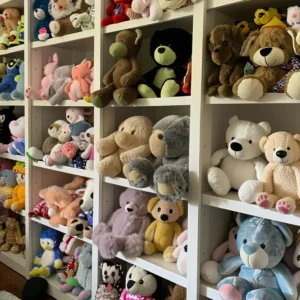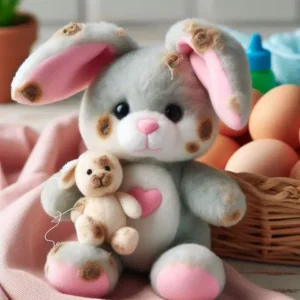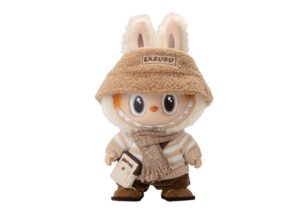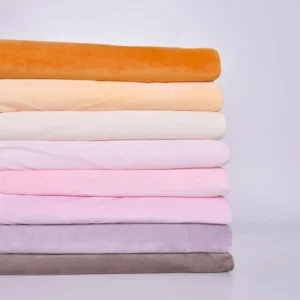Wrapping stuffed animals properly enhances their presentation and protects them during shipping. Whether for retail, gifts, or promotions, the right wrapping elevates the toy’s value and ensures it arrives in perfect condition.
Effective stuffed animal wrapping requires suitable materials, protective techniques, and consideration of size and shape. Incorporating branding and eco-friendly options further enhances customer experience and market appeal. This detailed guide walks you through every step.
Let’s explore how to wrap stuffed animals professionally and thoughtfully.
1.What Are the Essential Materials Needed for Wrapping Stuffed Animals?

Choosing the right materials lays the foundation for effective wrapping. Common essentials include tissue paper, plastic bags, boxes, ribbons, and cushioning materials.
Using soft tissue paper or protective plastic sleeves prevents surface damage. Durable boxes or flexible bags secure the toy during transport, while ribbons and tags add finishing touches.
Tissue paper is gentle on plush surfaces, minimizing friction and preventing dust accumulation. Clear plastic bags or shrink wrap shield toys from moisture and dirt, critical for long-distance shipping.
For bulky or delicate stuffed animals, sturdy cardboard boxes with cushioning like bubble wrap or foam peanuts provide extra protection.
| Material | Purpose | Notes |
|---|---|---|
| Tissue Paper | Surface protection, dust prevention | Acid-free preferred for preservation |
| Plastic Sleeves | Moisture and dirt barrier | Transparent for product visibility |
| Cardboard Boxes | Structural protection | Choose size based on toy dimensions |
| Cushioning Material | Shock absorption | Bubble wrap, foam peanuts, or air pillows |
| Ribbon/Tags | Presentation and branding | Adds aesthetic and marketing value |
Selecting quality materials tailored to the product type helps avoid damage and enhances perceived value.
2.How to Choose the Appropriate Wrapping Style Based on Size and Shape?

Stuffed animals come in various sizes and shapes, which influence the wrapping approach. Small plush toys differ from large or oddly shaped ones in packaging needs.
For small to medium-sized toys, simple tissue wrapping with ribbon works well. Large or irregularly shaped stuffed animals require boxes or custom-fit bags to ensure full coverage and protection.
The shape of the toy affects how snugly the wrapping fits. Round or symmetrical toys are easier to wrap with standard boxes or bags. Toys with limbs or extended parts may need flexible packaging that avoids pressure points.
Using transparent gift bags with drawstrings suits medium-sized toys for quick, attractive wrapping. For larger items, customized boxes with foam inserts prevent movement and damage.
| Toy Size | Recommended Wrapping Style | Key Considerations |
|---|---|---|
| Small (<20cm) | Tissue paper + ribbon or small box | Easy handling, decorative finishing |
| Medium (20-50cm) | Clear plastic bags + cushioning | Protection with product visibility |
| Large (>50cm) | Custom boxes with padding | Structural support and shock absorption |
| Odd-shaped | Flexible bags or custom inserts | Avoid pressure on protruding parts |
Matching wrapping style to toy dimensions balances protection with aesthetic appeal.
3.Which Techniques Ensure Protection During Shipping and Handling?

Protection during shipping is crucial to prevent damage and maintain quality. Wrapping must secure the stuffed animal while absorbing shocks.
Layered wrapping techniques combining cushioning, snug packaging, and moisture barriers minimize risks. Reinforced corners and sealed edges prevent tears and moisture entry.
Start by wrapping the toy in acid-free tissue paper, then insert it into a plastic sleeve or bag to prevent moisture damage. Add cushioning around the toy inside a box to reduce movement.
Sealing boxes with reinforced tape on edges and corners adds durability. Fragile or collectible toys benefit from double-boxing, where the first box contains cushioning and the second offers external protection.
| Technique | Benefit | Implementation Tips |
|---|---|---|
| Acid-free tissue wrapping | Prevents fabric friction | Use multiple layers for delicate toys |
| Moisture barrier layer | Protects from humidity | Use ziplock or heat-sealed bags |
| Cushioning padding | Absorbs shock and vibrations | Ensure even padding distribution |
| Reinforced packaging | Prevents box damage | Use quality packing tape and corner guards |
| Double boxing | Extra protection for fragile toys | Use shock absorbers between boxes |
These methods reduce damage risk throughout transit and handling.
4.How to Incorporate Branding and Customization in Stuffed Animal Wrapping?
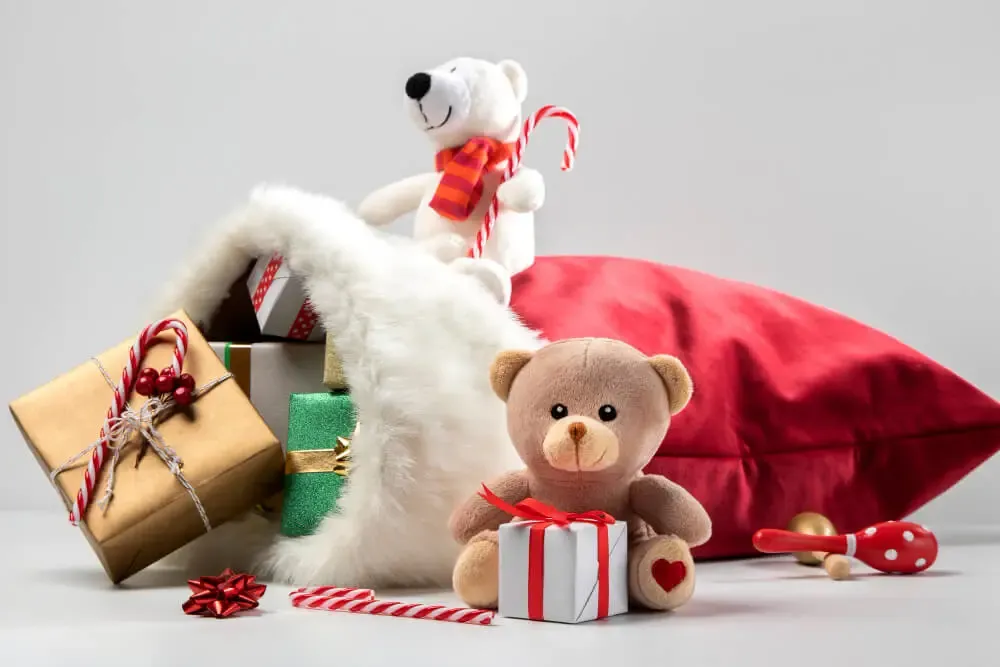
Branding the packaging adds value and strengthens customer connection. Custom labels, logos, and color schemes convey professionalism and enhance the unboxing experience.
Incorporating branded ribbons, printed tissue paper, or custom tags personalizes the packaging and reinforces brand identity. Eco-friendly branding options appeal to conscious consumers.
Branded ribbons or stickers with logos can elegantly finish wrapped toys. Printed boxes or tissue paper provide a cohesive, high-end look.
Custom hang tags or care labels add informational value while promoting your brand. For wholesale clients, customizable wrapping offers opportunities to feature seasonal designs or promotional messages.
| Branding Element | Purpose | Tips |
|---|---|---|
| Printed tissue paper | Cohesive, elegant presentation | Use consistent brand colors |
| Custom ribbons | Professional finishing touch | Match ribbon colors to brand palette |
| Logo stickers | Easy branding addition | Use high-quality, durable materials |
| Branded boxes | Enhance brand recognition | Include product info and QR codes |
| Custom care tags | Inform and promote | Add washing instructions or brand story |
Thoughtful customization strengthens brand loyalty and improves perceived product value.
5.What Are the Best Practices for Eco-Friendly and Sustainable Wrapping?
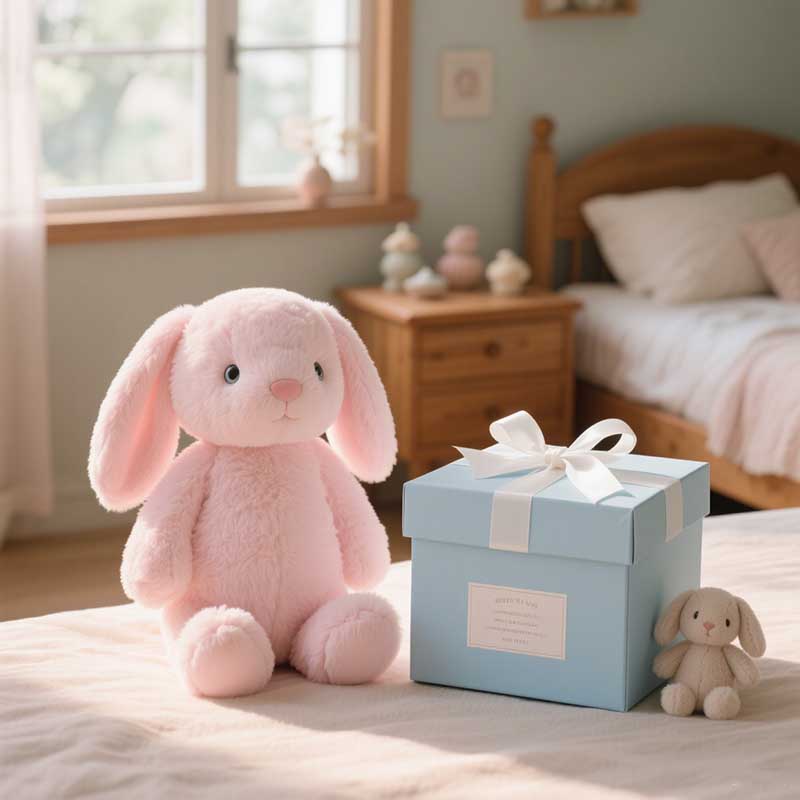
Sustainability is increasingly important to customers and brands alike. Eco-friendly wrapping reduces environmental impact while maintaining protection and presentation.
Using recyclable, biodegradable, or reusable materials like recycled paper, cotton ribbons, and cardboard boxes aligns packaging with green values. Minimizing plastic and waste is key.
Switching from plastic to paper-based protective wraps helps reduce pollution. Compostable tissue paper or bags made from plant-based materials provide alternatives.
Reusable fabric bags or boxes encourage customers to repurpose packaging, extending product life and brand exposure.
| Sustainable Material | Environmental Benefit | Practical Tips |
|---|---|---|
| Recycled cardboard boxes | Reduce landfill waste | Source from certified suppliers |
| Biodegradable tissue paper | Compostable and low-impact | Avoid coated or plastic-lined papers |
| Cotton or jute ribbons | Renewable and reusable | Offer customers ways to reuse |
| Plant-based bags | Compostable alternative | Check certifications and quality |
| Minimalist packaging | Reduce overall waste | Use just enough materials for protection |
Sustainability efforts resonate with modern consumers and improve brand reputation.
6.How to Secure and Finish the Wrapping for Optimal Presentation and Safety?
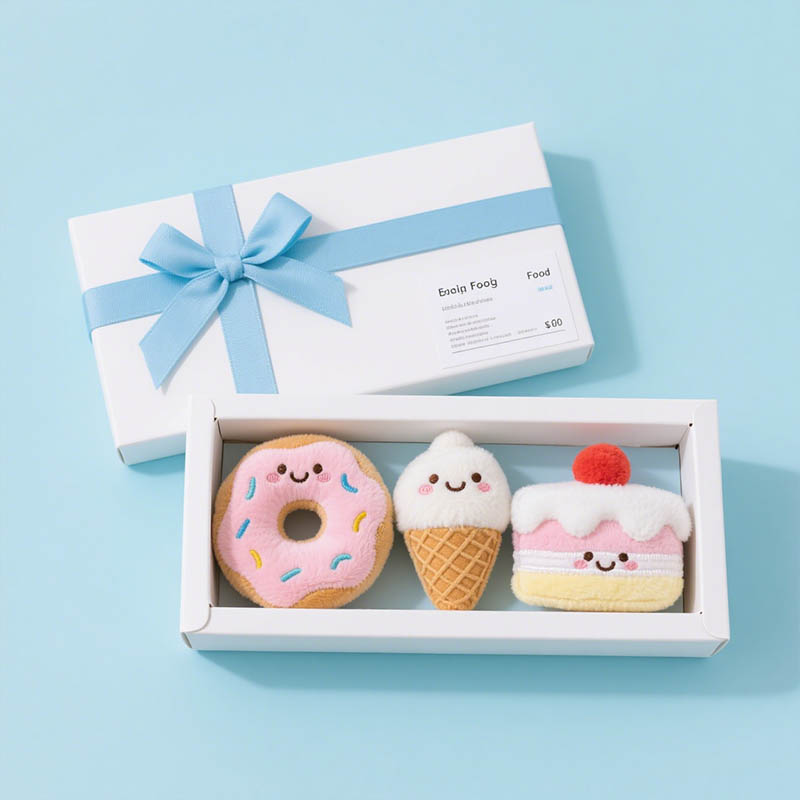
Finishing touches ensure the wrapping stays secure and looks professional. Proper sealing and neat tying make a big difference.
Using quality tape, twist ties, or ribbons to close packaging securely protects against tampering and transit damage. Decorative finishes boost shelf appeal and customer delight.
Sealing edges with reinforced tape prevents accidental opening. Ribbon bows or fabric ties add elegance and can be branded.
Avoid using adhesives that damage fabric if the customer unwraps the toy. Instead, secure outer packaging firmly while keeping inner wrapping easy to remove.
| Finishing Method | Benefit | Application Tips |
|---|---|---|
| Reinforced tape | Strong seal against damage | Use wide, high-quality tape |
| Twist ties or clips | Quick, adjustable closure | Avoid sharp ends near toy surface |
| Decorative ribbons | Enhance presentation | Choose colors and textures that complement brand |
| Branded tags | Inform and market | Attach with string or sticker |
| Easy-open packaging | Customer-friendly unwrapping | Use tear strips or perforations |
Well-secured and beautiful wrapping enhances customer satisfaction and repeat business.
Conclusion
Proper wrapping of stuffed animals protects products, enhances brand image, and improves customer experience.
For further insights on plush toy packaging and manufacturing, contact me at [[email protected]] or visit [https://plushtoyinchina.com].




